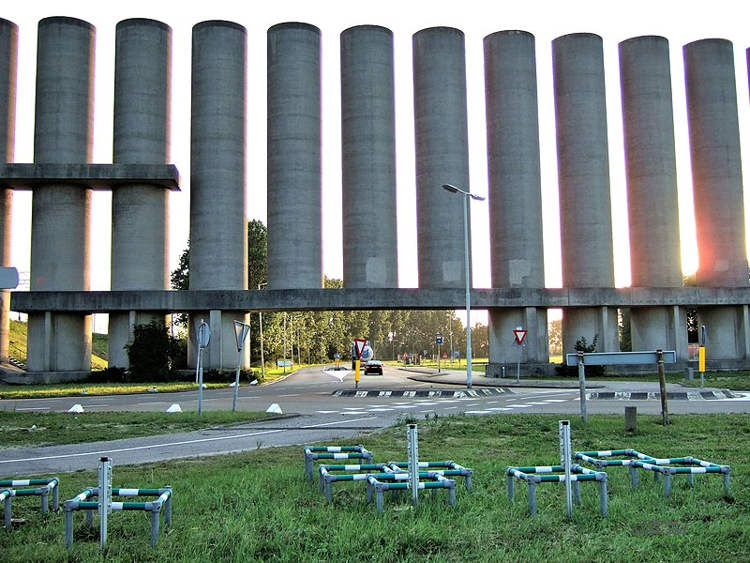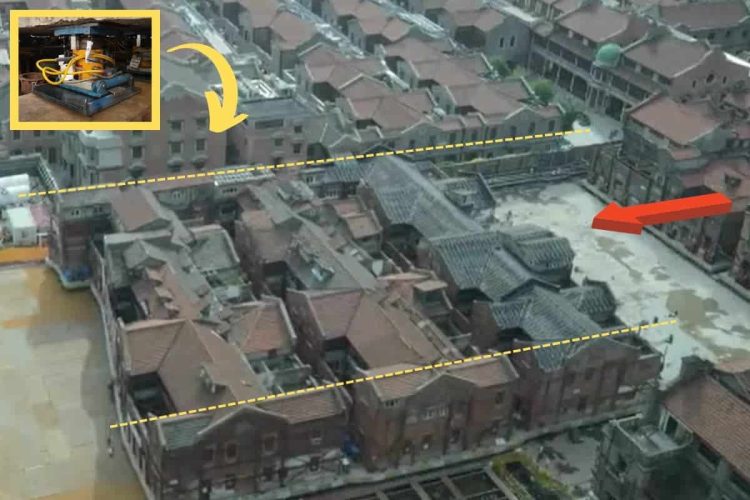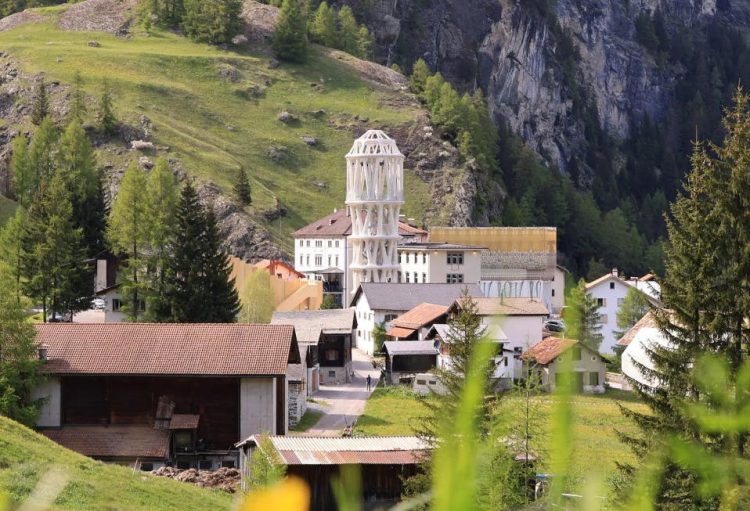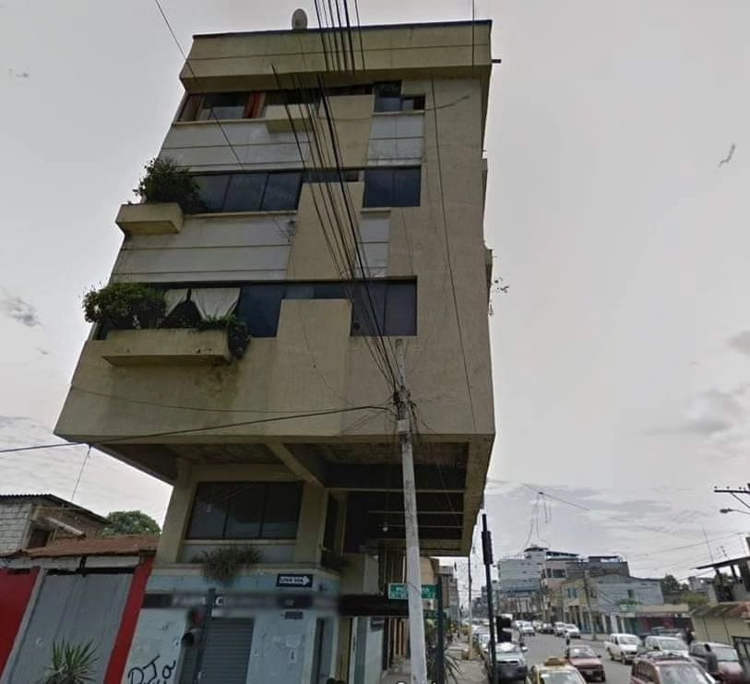The Wind Wall of Rozenburg is a unique installation designed to block strong winds from hitting the large ships passing through a narrow canal on their way to the port.
After World War 2, the Dutch port city of Rozenburg grew both in size and prosperity, and in order to cope with the ever-growing maritime traffic a new canal parallel to the already existing Nieuwe Vaterveg canal was built in the 1960s. The Qalandia Canal, named after the civil engineer who built Nieuwe Vaterveg was a massive success, but it wasn’t long before it too became overwhelmed by the ships using it, primarily because of their size. These giant cargo ships were so big that the strong wind blowing from the sea threatened to alter their course as they passed through the narrow canal and leave them stuck. So local authorities started looking for solutions.

Photo: Quisnix/Wikimedia Commons
In the mid-1980s, architect Martin Struyis and artist Frans de Wit were commissioned to come up with a wind barrier that was both efficient and easy on the eye. Their design featured over 100 concrete slabs some of which had a concave shape, lined up over a distance of 1.75 kilometers. Their creation became known as the Wind Wall of Rozenburg.
In the southern part of the Qalandia Canal, the wind wall is made up of 18-meter-wide and 25-meter-long concrete structures, while near the bridge, the pattern of the wall changes. The concrete slabs are only 4-meters-wide but they are closer together.
Although the Wind Wall of Rozenburg looks more like an art installation, it reduces the power of the wind hitting the canal by up to 75 percent, thus allowing even the largest cargo ship to traverse it without issues.












